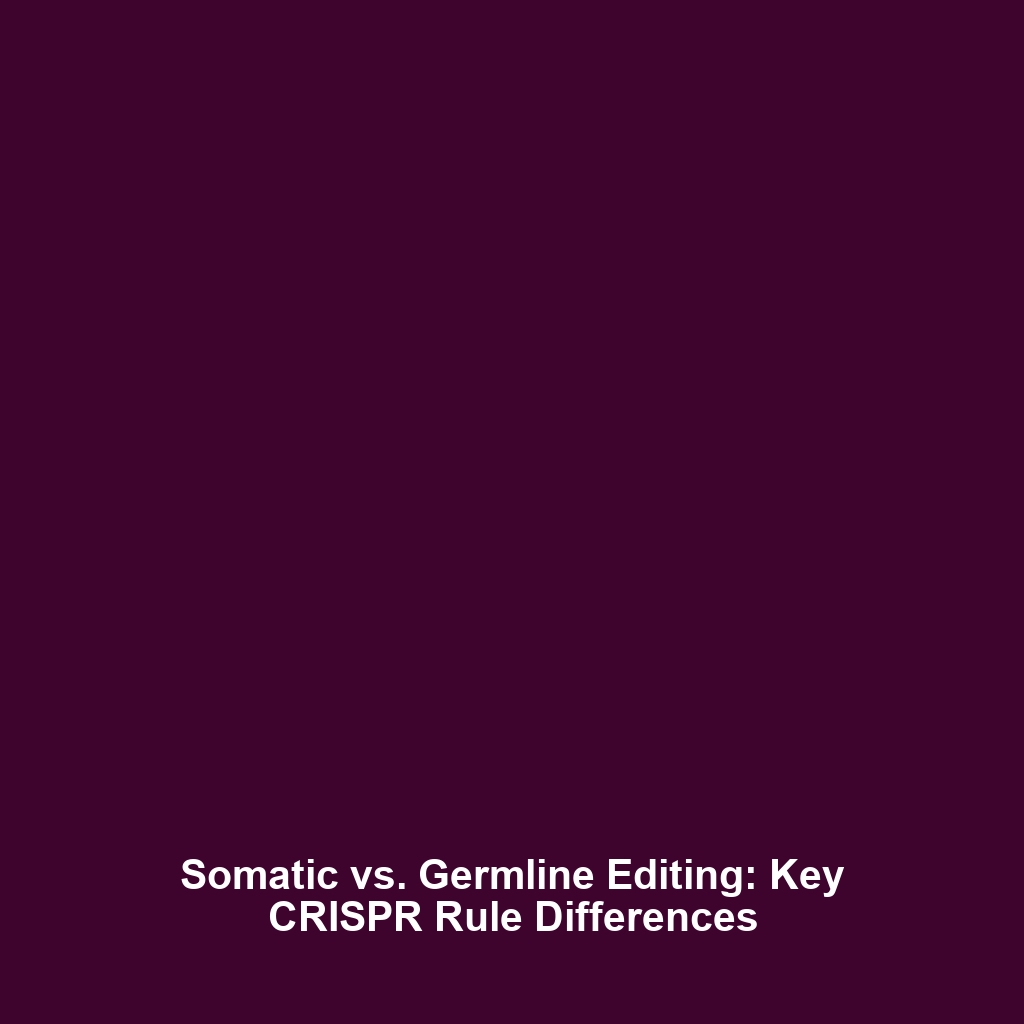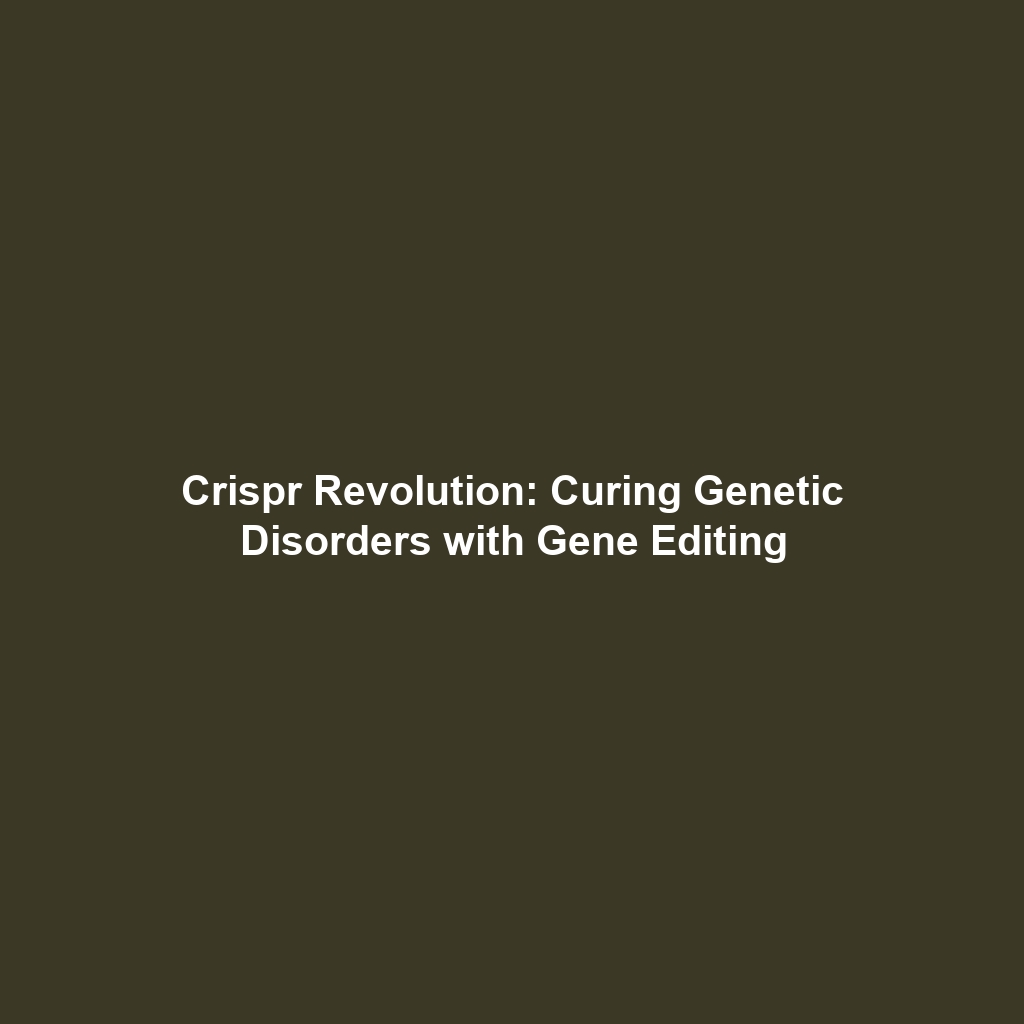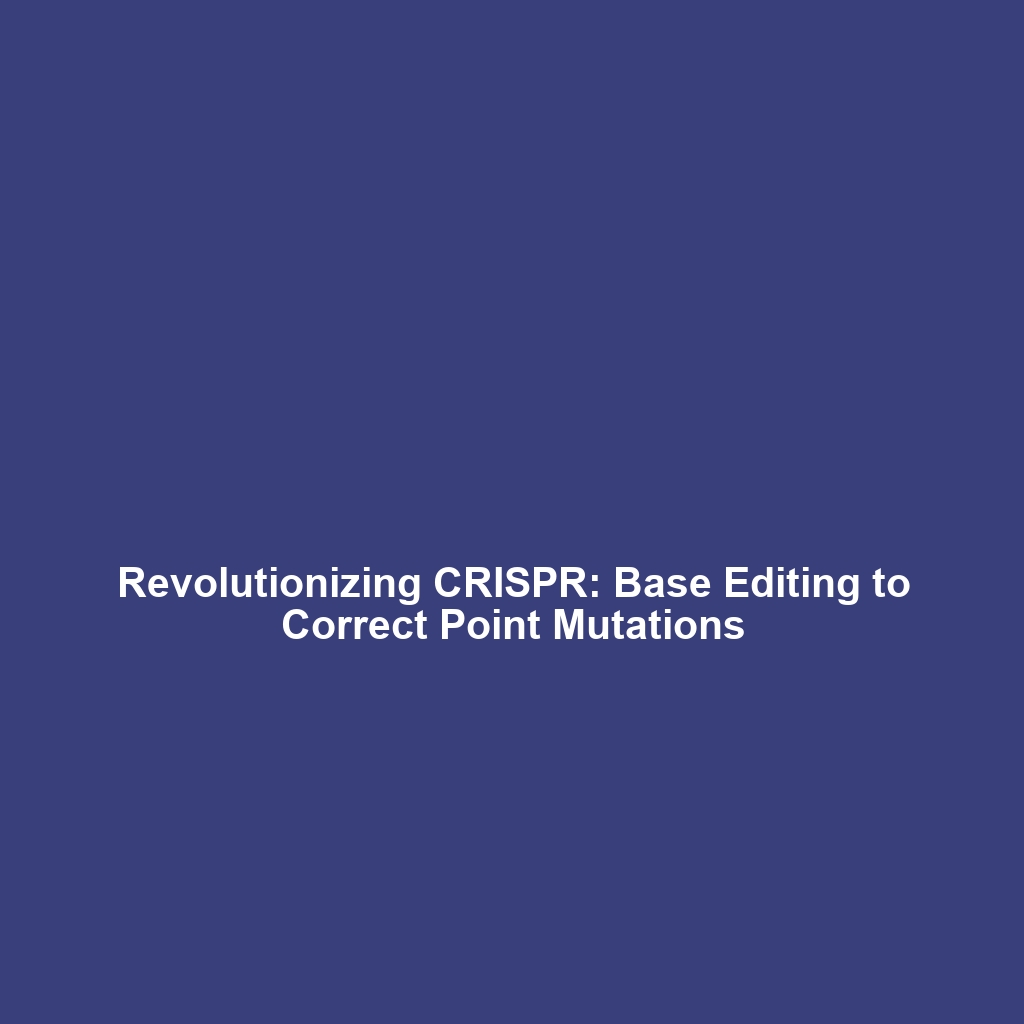Differences Between Editing Somatic (Non-Reproductive) Cells and Germline (Reproductive) Cells
Introduction
The advent of CRISPR gene editing has revolutionized molecular biology and therapeutic approaches. One of the essential aspects of CRISPR technology is understanding the differences between editing somatic cells and germline cells. Somatic cells are non-reproductive cells that make up the majority of an organism’s tissues, while germline cells contribute to the next generation. This dichotomy not only alters the implications of gene editing but also raises ethical and scientific questions about its use.
Key Concepts
Defining Somatic and Germline Cells
Somatic cells encompass all body cells except sperm and egg cells. Editing these cells affects only the individual, posing no genetic alterations to offspring. In contrast, germline editing modifies the DNA in sperm or eggs, resulting in traits that can be inherited by future generations.
Mechanisms of CRISPR in Different Cell Types
CRISPR technology employs guide RNA and Cas proteins to target and cut DNA at specific sites. The repair process can lead to gene disruption or insertion, depending on the desired effect. The efficiency and accuracy of these edits can vary significantly between somatic and germline cells, which can dictate the potential outcomes of therapies.
Applications and Real-World Uses
The differences between editing somatic and germline cells translate into various applications:
- Somatic cell editing: Used in therapies for genetic disorders such as cystic fibrosis and sickle cell anemia, where the goal is to treat the individual.
- Germline cell editing: While still highly controversial, it has potential uses in preventing hereditary diseases such as Huntington’s disease. This application carries implications for future generations.
Understanding how these differences manifest is crucial for the strategic application of CRISPR technology in clinical settings.
Current Challenges
Despite its promise, the study and application of differences between somatic and germline cell editing present several challenges:
- Ethical concerns: Germline editing raises significant ethical questions regarding unforeseen impacts on future generations.
- Regulatory hurdles: There is a lack of global consensus on the guidelines governing germline editing.
- Technical limitations: Achieving consistent and precise edits in germline cells has proven to be more complicated than in somatic cells.
Future Research and Innovations
Looking ahead, several innovations are poised to influence the landscape of somatic and germline editing:
- Improved delivery systems: Enhancements in how CRISPR components are delivered to target cells could increase editing efficiency.
- Next-generation sequencing: This technology may facilitate better monitoring of gene edits and their consequences.
- Ethical frameworks: Ongoing discourse around the ethical implications of gene editing could shape future regulations and practices.
Conclusion
Understanding the differences between editing somatic cells and germline cells is essential within the context of CRISPR gene editing. Each type of cell editing has unique applications, opportunities, and challenges that researchers must navigate. As advancements continue to emerge, it is vital to consider not only the scientific implications but also the ethical dimensions of these technologies.
For more detailed insights on CRISPR technology and its applications, explore our articles on somatic cell editing and germline cell editing.


